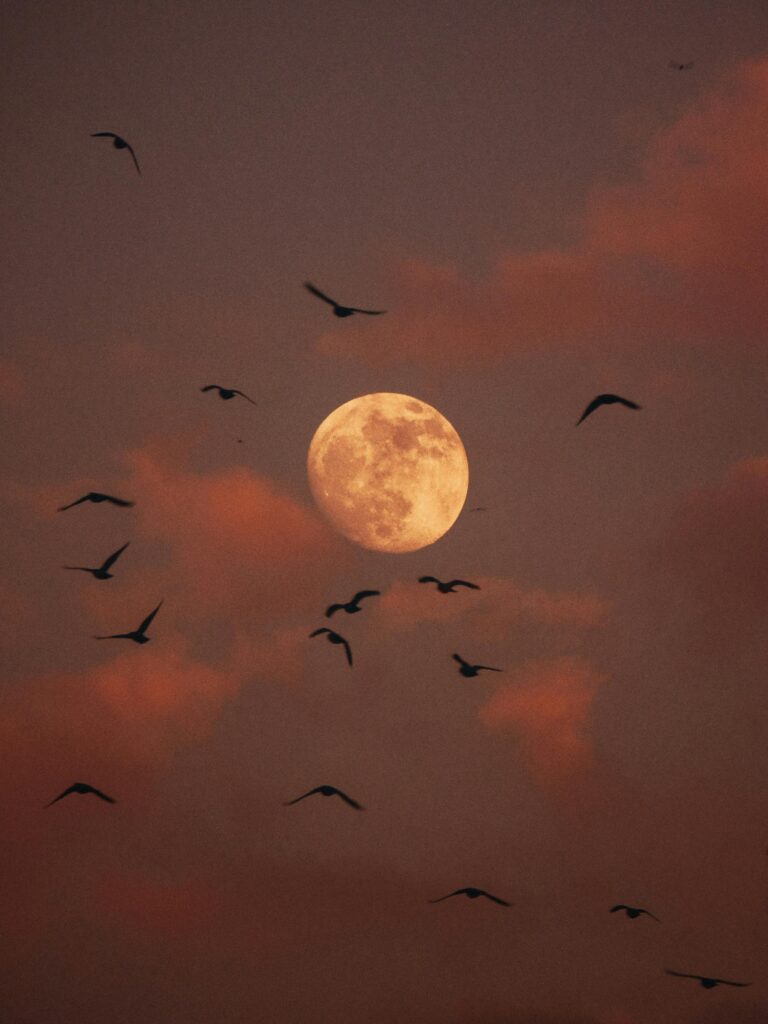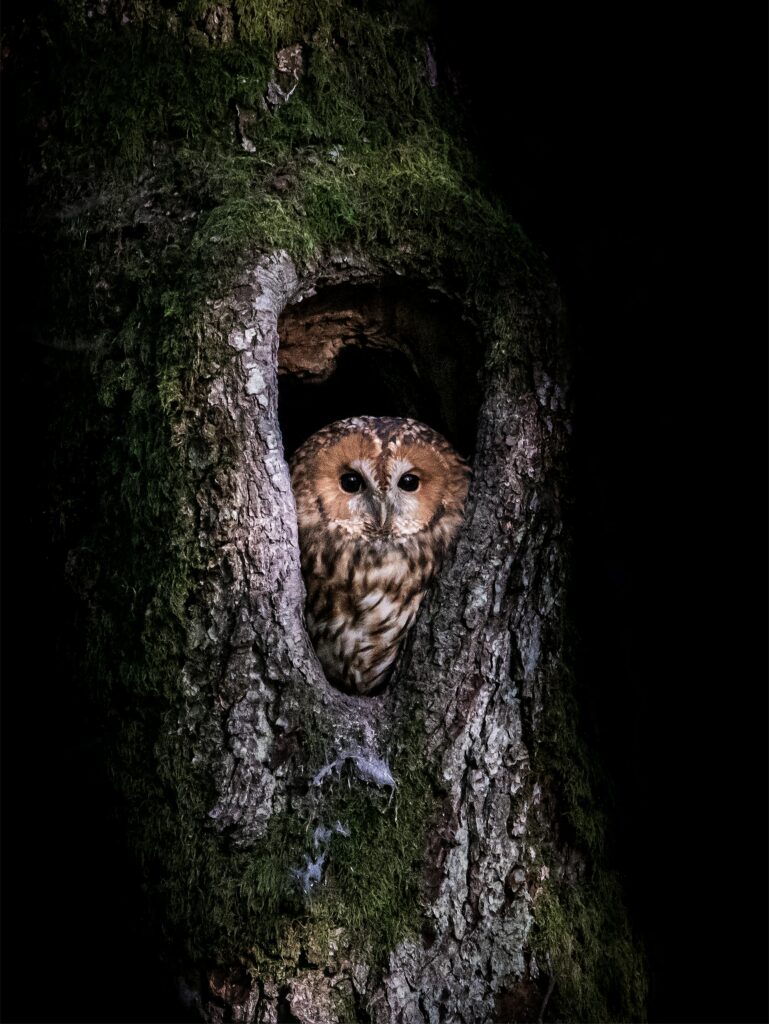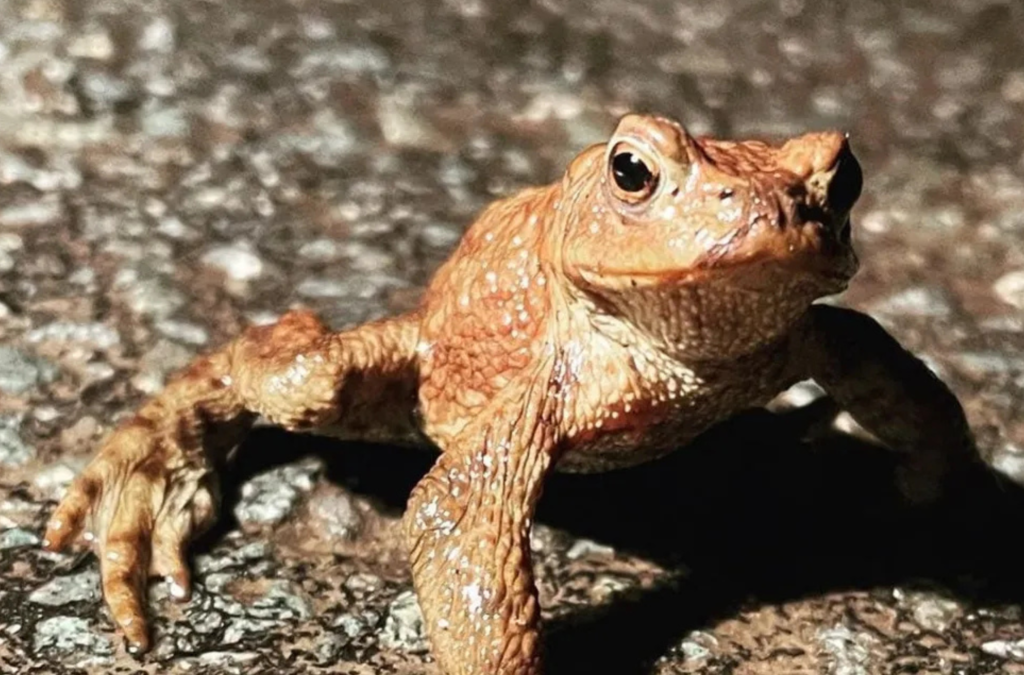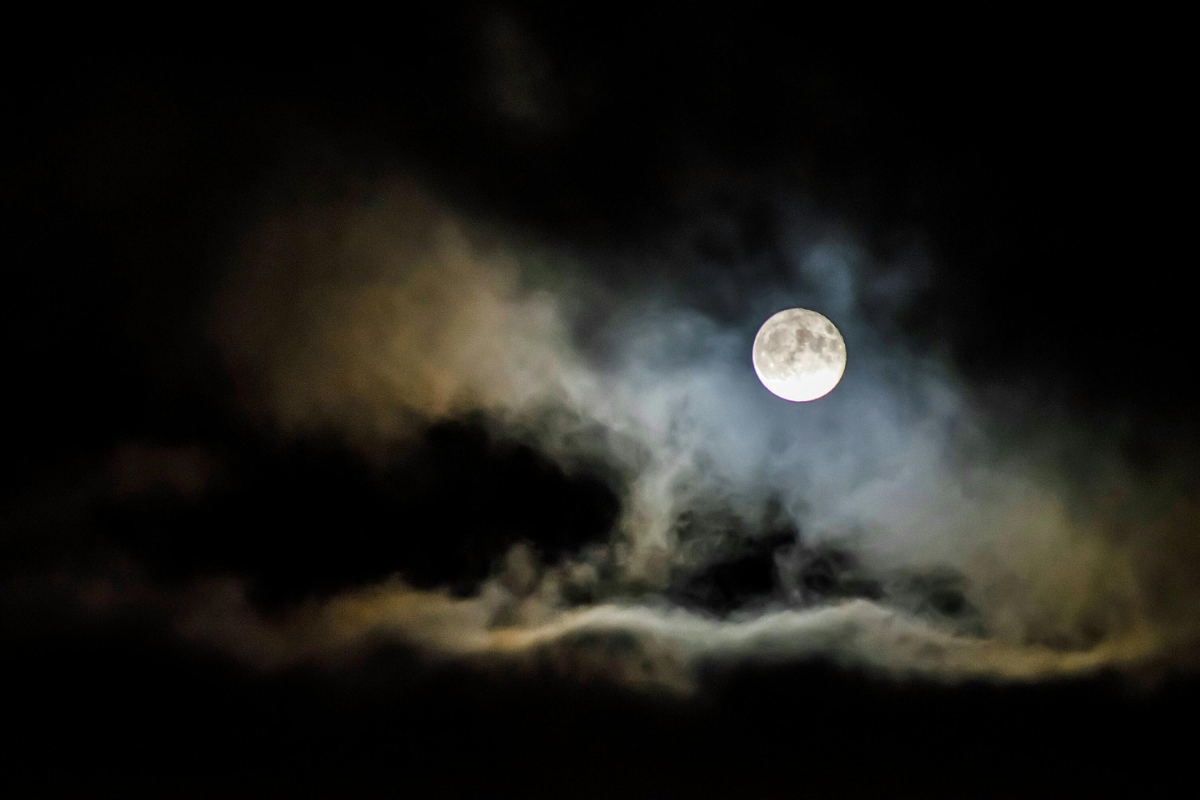For billions of years, all life has relied on Earth’s predictable rhythm of day and night. This rhythm is encoded in the DNA of all plants and animals, including us. Humans have radically disrupted this cycle by lighting up the night sky. Plants and animals depend on Earth’s daily cycle of light and dark to govern life-sustaining behaviors such as reproduction, nourishment, sleep, and protection from predators.
Nocturnal animals are roughly divided into two groups. Some strenuously avoid light, often going on long routes around lit areas, wasting precious energy; alternatively, they may delay or even give up on mating and feeding routines.
Toads may be particularly affected by increased levels of artificial light, as they have a very short breeding season and may use light to orient themselves toward ponds and to aid in breeding synchronicity. Owl numbers are falling, partly due to the reduction in suitable feeding areas caused by light pollution.
Bats, such as the brown long-eared, greater horseshoe, and Natterer’s bats, are used to operating in very dark conditions and rely on echolocation. Encountering bright artificial light at night (ALAN) can lead to the equivalent of blindness, causing collisions.
This also happens to exhausted and confused migrating birds, who navigate by the stars or visible landmasses but encounter unexpected artificial light. Migratory birds depend on cues from natural light sources to time their migrations. Artificial lights can cause them to migrate too early or too late, leading them to miss ideal climate conditions for nesting, foraging, and other behaviors.
Other animals are attracted to artificial lights. Moths, for example, waste energy in their confusion as they batter against the lights and become prey to pipistrelle bats, who in turn can become prey to cats in this artificial environment.




Outdoor lighting directly and significantly contributes to the loss of insects and biodiversity everywhere. Sixty percent of insects are nocturnal, and it is estimated that a third of those attracted to artificial light die as a result.
A research paper published in the scientific journal Biological Conservation on November 21, 2019, raises new concerns about the impact of artificial light at night on our environmental health. The journal emphasizes that we must take the “Insect Apocalypse” seriously if we hope to prevent a dire situation from worsening. Insects are linchpins of the environment and essential for the survival of most life forms, including ourselves.
Bat populations have decreased so dramatically over the last century that all 17 resident species are now protected by law. Most of us have seen heartbreaking footage of baby turtles wandering toward towns, mistaking artificial lights for moonlight on the sea. Similarly, poor glow-worms, which emit a low, greenish light to attract mates, can’t compete with our LEDs.
So, what can we do to help in our village?
It’s easy to eliminate, reduce, or modify the ecologically devastating artificial lighting in our homes, schools, and businesses if we choose to, simply by turning off exterior lights as much as possible. The Dark Skies campaign has raised awareness that street lights need only illuminate downward, leaving the night sky visible.
- Reduce Unnecessary Outdoor Lighting: Turn off exterior lights whenever possible. When lighting is necessary, make sure it’s directed downwards and shields the night sky.
- Use Motion-Activated Security Lights: Instead of constant lighting, use motion sensors to minimize illumination times and energy use. Ensure lights only cover necessary areas like steps, keyholes, or paths.
- Install Light-Blocking Curtains: These can prevent indoor lights from leaking outside, conserving energy and reducing sky glow.
- Choose Eco-Friendly Light Colors: Opt for warm yellow or red lighting, which is less disruptive to wildlife and doesn’t interfere as much with human sleep. Avoid cool white or blue lights, which have been found to damage the retina and disrupt our sleep patterns, causing health problems for both wildlife and humans.
Our village plan clearly states that we do not want light pollution at night in our villages. Please help our nocturnal animals by being aware of where you can reduce your impact. Thank you.

